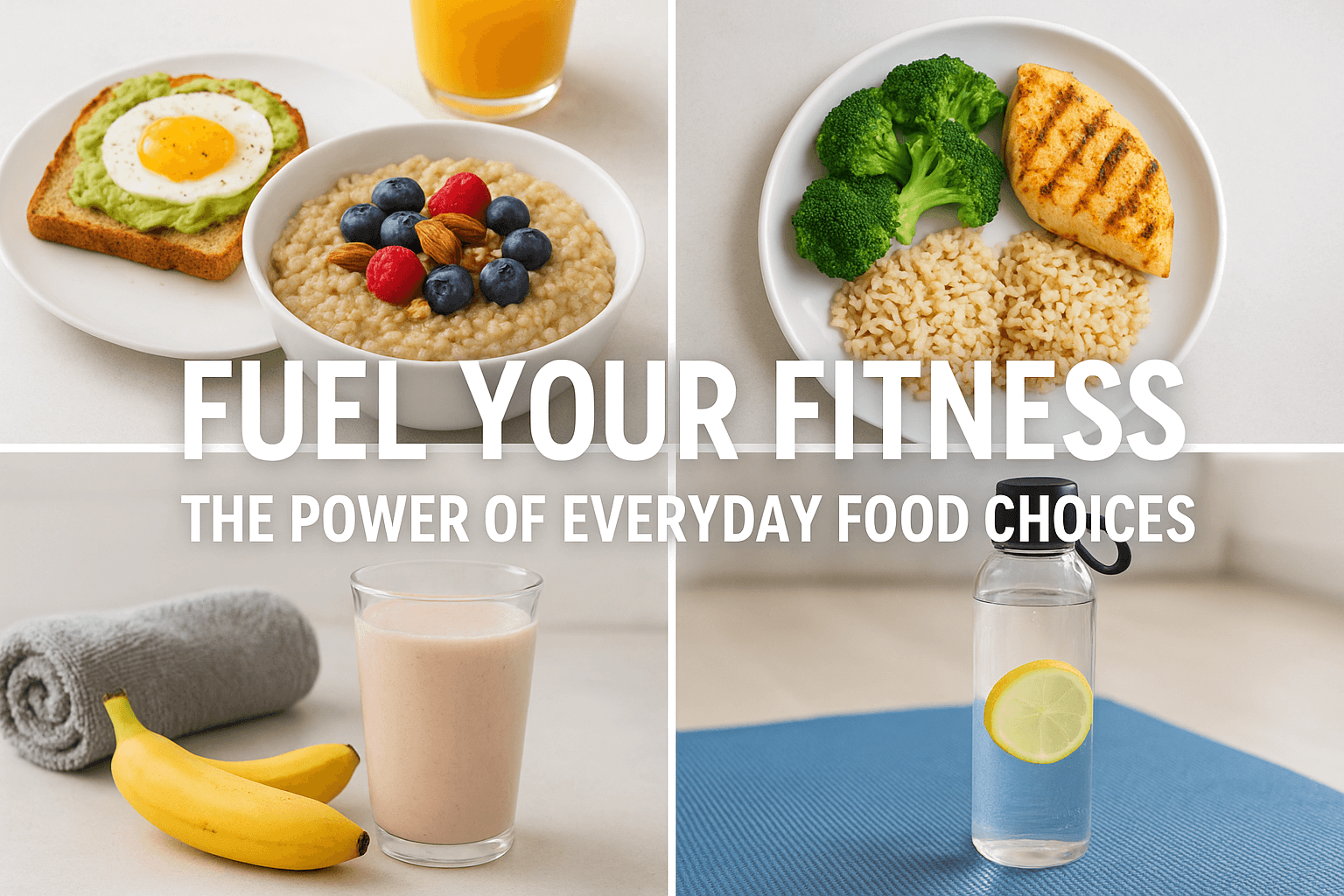fit is not just about sweating it out in the gym or pushing through tough workout routines. The real foundation of fitness lies in what you put on your plate every single day. Eating smart and building healthy food habits can fuel your body, speed up recovery, and help you perform better in every aspect of life. Let’s dive into some practical food habits for fitness that anyone can follow: the right way to break the fast, keeping portion sizes in check, eating after exercise, and adopting the right drinking style.
The Right Way to Break the Fast
They say breakfast is the most important meal of the day—and when it comes to fitness, that statement holds true. After hours of fasting while you sleep, your body needs energy to kickstart the day. A wholesome breakfast can replenish glycogen stores, stabilize blood sugar levels, and give your metabolism a healthy boost.
But not all breakfasts are created equal. Sugary cereals, deep-fried snacks, or refined flour items might give a quick energy spike but soon leave you feeling sluggish. Instead, aim for a balanced plate that combines complex carbohydrates, lean protein, and healthy fats. For example, oatmeal topped with fruits and nuts, whole-grain toast with eggs, or Greek yogurt with berries can be perfect choices.For more guidance, check out healthy breakfasts from Johns Hopkins Medicine.
Example: Yesterday I had Greek yogurt with berries—kept me full till lunch with no mid-morning cravings.
Inbound links: Explore more about balanced nutrition and healthy eating habits
Count on the Right Portion Size
Even the healthiest food can work against your fitness goals if eaten in the wrong quantity. Overeating can lead to excess calorie intake, while eating too little can leave you drained and unable to fuel your workouts. That’s why portion control is so important.
A simple trick is to visualize your plate:
- Half should be filled with vegetables or salad.
- One quarter with lean protein like chicken, fish, tofu, or beans.
- One quarter with whole grains or complex carbs such as brown rice, quinoa, or sweet potatoes.
This method helps maintain balance and prevents piling on unnecessary calories. Eating slowly also helps—you give your body time to recognize fullness cues, which prevents overeating.
For tracking meals, apps like portion control tools on MyFitnessPal can help log food intake and keep calories in check.
Example: Dinner last night was grilled chicken, rice, and broccoli—balanced, tasty, and just the right size.
The 60-Minute Rule for Eating After Exercise
Your workout doesn’t end when you leave the gym; recovery is just as crucial. One of the best ways to recover quickly and maximize the benefits of exercise is to eat a nutrient-rich meal or snack within 30 to 60 minutes post-workout.
During exercise, your muscles use up stored glycogen, and small tears occur in muscle fibers. Post-workout nutrition helps restore glycogen levels and repair muscles. The ideal combination is carbohydrates to replenish energy and protein to aid muscle recovery.
Think along the lines of a banana with a protein shake, grilled chicken with brown rice, or cottage cheese with fruit. Even a peanut butter sandwich on whole-grain bread can work.
Harvard Health explains the science of post-workout nutrition and why this 60-minute window matters.
Example: After the gym, I grabbed a banana and protein shake—felt less sore the next morning.
Drink Smart
Hydration is often overlooked, but it plays a huge role in fitness. Water regulates body temperature, supports digestion, lubricates joints, and transports nutrients to cells. Dehydration can cause fatigue, headaches, and reduced performance both mentally and physically.
The best drinking style is simple: sip water throughout the day rather than chugging large amounts at once. Carrying a reusable bottle can remind you to drink regularly. Aim for at least 8 glasses of water daily, though active individuals may need more depending on sweat loss.
It’s also important to be mindful of what you drink. Sugary sodas, energy drinks, and alcohol add unnecessary calories and can dehydrate the body. Opt for water, herbal teas, coconut water, or fresh fruit-infused water as healthier alternatives. If you’re engaging in long, intense workouts, electrolyte drinks can help restore lost minerals.
Example: I sip from a 1-liter bottle during the day—easy way to stay hydrated without overdoing it.
Wrapping Up
Fitness is built on consistency, and your food habits shape that foundation. A nutritious breakfast fuels your day, portion control keeps calories in check, post-workout meals speed recovery, and the right drinking habits keep you hydrated and energized. These aren’t complicated rules—they’re simple adjustments that make a world of difference.
By adopting these habits, you’re not just working toward a fit body but also building a healthier lifestyle. Remember, fitness is not about strict diets or short-term fixes—it’s about sustainable choices that support your long-term well-being.

